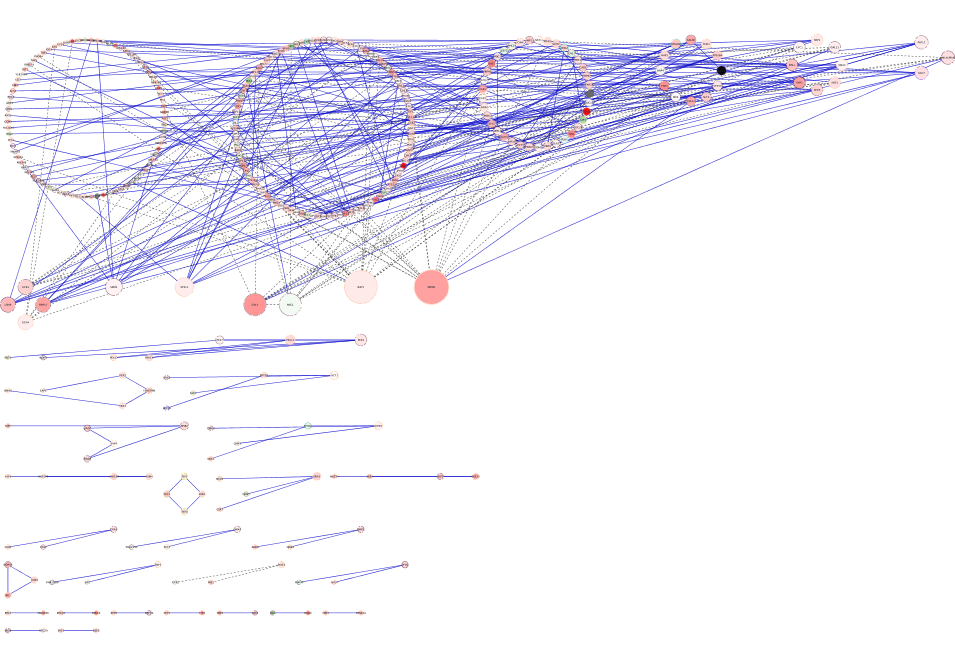

Understand available software implementing these approaches.

#Cytoscape tutorial plus
(3) Understand machine learning approaches to discovering mutational signatures in large sets of mutational spectra plus the opportunities and challenges in using these approaches. (2) Understand computational analysis for delineating mutational signatures in experimental systems, such as cultured cells or rodents, including subtracting signatures of background mutagenesis and of experimental artifacts. Understand the importance of mutational signature analysis for research into cancer development, for detecting mutational exposures that cause cancer, and for studying how endogenous and exogenous DNA damage as processed by normal and defective DNA repair leads to particular mutational signatures. (1) Understand basic concepts of mutational signature analysis. This tutorial will equip participants with the ability to run machine-learning software to discover mutational signatures and to assess their activity in tumors and with strategies to evaluate the soundness and biological relevance of the results. Finally, the tutorial will show examples of the importance of interpreting machine-learning results in the light of all available evidence to obtain biologically relevant results. We will also discuss in depth the importance of benchmarking the machine-learning approaches on synthetic data. We will cover in detail machine learning approaches to discovering mutational signatures in large sets of tumors and the strengths and weaknesses of these approaches. cultured cells or rodents), including the computational subtraction of the signatures of background mutagenesis and of experimental artifacts. We will introduce the computational analysis needed to delineate mutational signatures in experimental systems (e.g. We will cover the basic concepts of mutational signature analysis and show how this analysis is important for understanding cancer development, for detecting mutational exposures that cause cancer, and for understanding DNA damage as processed by normal and defective DNA repair. Unfortunately, however, the cancer genomics literature contains numerous erroneous mutational signature results stemming from uncritical application of these packages. In line with the importance of mutational signature analysis, there are now ~20 software packages that use machine learning to discover mutational signatures and assess their activity in tumors. More than 100 mutational signatures have been described, many of which have unknown causes. cell culture or rodents) or can be discovered by machine learning across sets of hundreds to 10s of thousands of tumors. Mutational signatures can either be delineated in experimental systems (e.g. Mutational signature analysis can also provide insight into the causes of specific oncogenic mutations and can reveal gaps in our understanding of the mechanisms of DNA damage and repair. Signatures also showed that exposure to naturally occurring mutagens that cause liver cancer is much more widespread than suspected. Over the last decade, mutational signatures have revealed endogenous mutational processes that are widespread in many cancer types but that were not previously known. Mutational signature analysis focuses on patterns of mutations across the genome to infer their causes, and is now an essential component of cancer-genomics studies. Rozen, Duke NUS Centre for Computational Biology Duke-NUS Medical School, Singapore.Īrnoud Boot, PhD Postdoctoral Fellow Duke-NUS Medical School, Singaporeįerran Muiños, Institute for Research in Biomedicine Barcelona, The Barcelona Institute of Science and Technology, Barcelona, Spain Overview


 0 kommentar(er)
0 kommentar(er)
